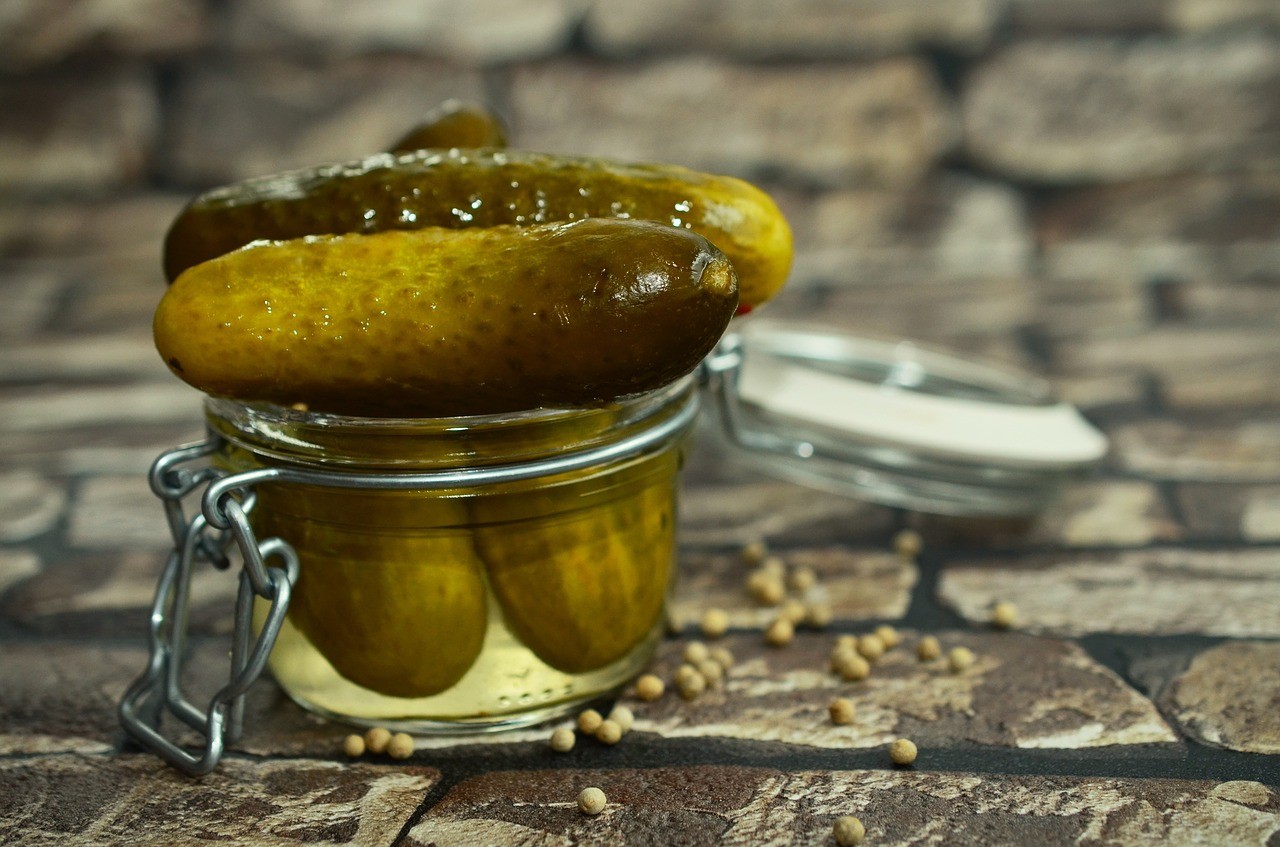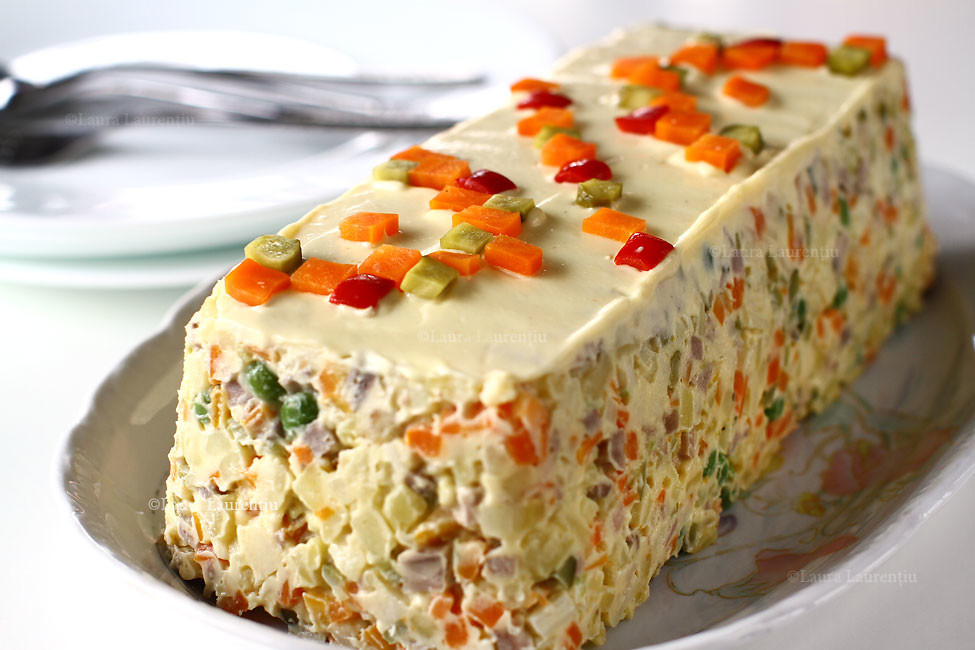Simple Romanian recipe: salata boeuf
There are many Romanian dishes that are very delicious and rather simple but mostly a "special occasion" dishes: salata boeuf is one of them and I'm glad that we eat it once at year so I can savour it better! In my family we eat it at New Year's eve but I know it can be prepared on (almost) every festivity.

According to Wikipedia, this dish has russian origines: also, in Italy there is one variant of it which is called Insalata russa (Russian salad) while the romanian name would indicate some french influences on the recipe (boeuf means beef).
I chose to describe how to prepare this dish as it is the only one, among the most important romanian traditional dishes, which I know how to cook without asking help to my parents and which I enjoy doing it! Even if we eat it on important occasions, I suggest to do it whenever you want because it is not particularly difficult and it is not heavy at all as it contains many vegatables! You can make it and store it in fridge for many days: it is better cold so you don't have to heat it! When I was in Denmark, I found out that there it was called Italian salad but it was very different: it only contained vegetables and mayonnaise and it was very good as a sauce for sandwiches. As concerns this version here, you can just eat it with some bread!
All you need is: potatoes, some beef and chicken meat (breast), pickles, carrots, peas and mayonnaise! Another important thing is to understand how to create harmony between the ingredients: I think it depends on how we actually prefer it but you should avoid putting too many potatoes because the salad will get a bit sticky. Also carrot, peas and meat should be balanced with more pickles (or you can also add some pickled pepperoni to get more flavour and colour! ). Moreover, I think it's better to put more chicken than beef meat.

1. Firstly you have to peel potatoes and carrots: we usually prefer to avoid peeling the potatoes and we do it afterwards, when they are cold, but it makes no real difference.
2. Now you have to boil the potatoes together with the carrots without chopping them: by doing this you will have well boiled potatoes but not too fragile to crumble when you will mix them with the other ingredients. Here you have to make sure potatoes, in particular, are well boiled inside: you can understand it by cutting in half one of them.
3. In another pot you have to put the beef and chicken meat and boil them until you think they are done: in particular, chicken meat needs to be well cooked.
4. Lastly, boil the peas: they are done in more or less 15 minutes and you can do it 20 minutes after you put on the stove the other ingredients, and in the meanwhile they get cooked you can chop the pickles.
5. Now that you have your boiled meat and veggies you can begin by taking out of the water the potatoes and the carrots and make them cool down: if you chop them when they are still hot you will not have perfectly intact cubes and they will create a sticky cream with the mayonnaise. It's the same for your meat: it is better if they are colder so you can cut them in more precise shapes.
6. Now that you have all your ingredients you should proceed with chopping them: vegetables should be cut in smaller cubes while the meat in bigger ones, so you can actually feel the flavour of meat!
7. Once you have chopped all the ingredients you can mix them with the peas: to all this ensemble you have to add the mayonnaise (one medium jar should be enough) and homogeneise the whole thing.
In Romania, we use to decorate it with all kinds of ingredients.
Good luck!


Photo gallery
Content available in other languages
Want to have your own Erasmus blog?
If you are experiencing living abroad, you're an avid traveller or want to promote the city where you live... create your own blog and share your adventures!
I want to create my Erasmus blog! →







Comments (0 comments)